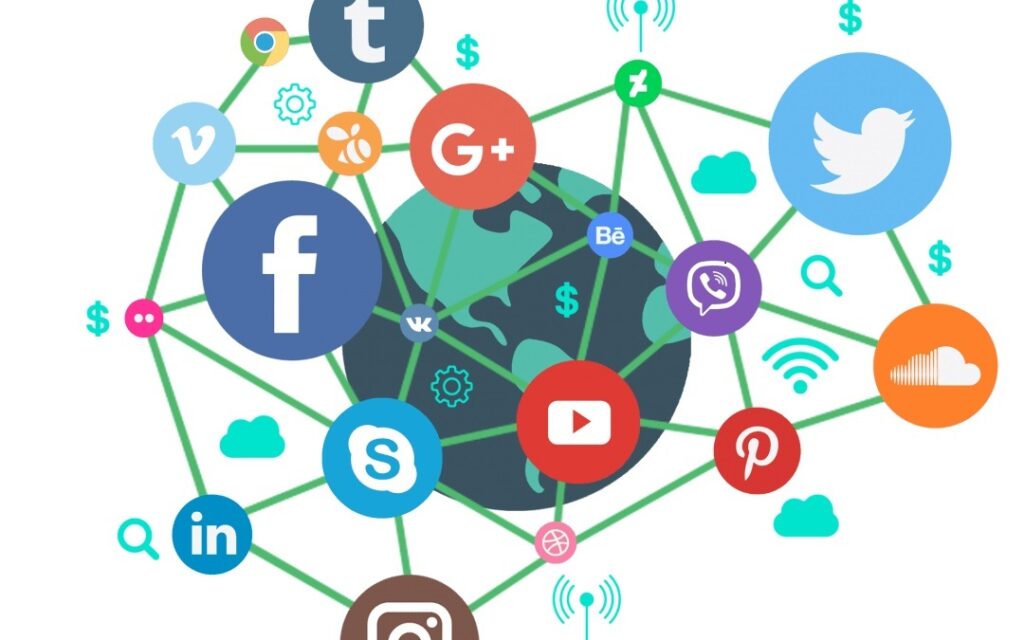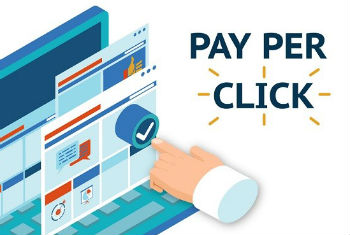You might be offering the best of products or services in the world as a company, but the bottom line is that if no one knows that you exist, you are doomed to fizzle out soon. This is the prime reason that most startups fail within the first 5 years of inception.
That is why almost every company having online presence leverages digital marketing to increase relevant website traffic. Needless to say, the organization with a robust inbound leads marketing strategy emerges as the winner. In fact, you’d be surprised that it’s even possible to outsell an average product or service if you maintain a steady inbound leads flow from the beginning of the fiscal year.
In simple marketing terms, more leads mean more revenue and more revenue means more profit. Having worked in the IT industry as a marketing strategist for several years, I have spent a crazy amount of time in hobnobbing with numerous lead generation techniques with just one goal in mind, to generate leads that will convert into business.
For those interested in knowing the secret behind B2B lead generation, I offer them my pearls of wisdom.
Conducting Market Research
Conducting a preliminary market research is essential for achieving success in B2B channel marketing. For converting your website traffic into leads and sales you must first understand what your potential customers need, where their interests lie and above all, what are their pain points! This way you’d be able to identify your target audience. This vital exercise is called market research and is crucial in defining your inbound leads marketing strategy. Only once you have narrowed in on your target audience, you can engage them with relevant content for lead generation.
Studying consumer preferences and getting an insight into their spending habits helps in good business decision-making. At one time conducting a market research used to be a time-consuming and expensive affair, but not anymore. Market research has become more instant and convenient with the advent of mobile market research. With efficient use of smartphones, polls and surveys can be conducted and the results analyzed instantly. Market research also involves analyzing information from millions of social media posts to understand user behavioral patterns. Market research results guide businesses in refurbishing their content and CTAs thereby improving conversion rates.
SEO – Search Engine Optimization

When was that last time that you while looking for information on Google search bothered to look at the second page results? Can’t remember, right? If you do happen to compare the search results of the first page with the second page on any search engine, be it Google, Bing or Yahoo, you would find a wide gap both in terms of quality and relevance of the content. In fact, 75% of internet users don’t even go beyond the first page. So, ranking high in search results is imperative to ensure a steady flow of visitors to your site.
Good Search Engine Optimization (SEO) practices involving curating relevant keywords and optimizing content enable web crawlers to index your website’s pages faster and improve the search rankings. This leads to increase in the site’s visibility, translating into more traffic, more conversions and eventually in generation of more revenue.
A Few Interesting Facts Related to SEO
- 51% of all website traffic comes from organic search which captures over 40% revenue. (Source: BrightEdge)
- The sites listed on the first page of Google generate an average traffic share of 91.5%. (Source: Chitika)
- On an average over 3.5 billion searches are conducted on Google on a daily basis. (Source: Internet Live Stats)
- 70 to 80% users ignore paid ads and focus on organic results. (Source: imFORZA)
- SEO leads have a 14.6% close rate, while outbound leads (such as direct mail or print advertising) have a 1.7% close rate. (Source: imFORZA)
Key SEO Techniques Which You Should Adopt for Lead Generation:
- Conduct an SEO Audit on your website
- Create product specific, SEO optimized landing pages
- Your website should be mobile-friendly
- Maximize use of infographics
- Optimize your site’s content for RankBrain
- Keep the content length around 1,900 words
- Post only subject-specific and relevant content on social media
- Use internal deep linking
- Send link juice to low ranking pages
- Link to high authority domains
- Target the keywords your competitors are using
- Regularly update your website’s content
- Use multiple keywords in SEO page titles
Apart from the above techniques, there’s a lot more that goes into converting visitors into customers like having a lead capture form, a sales page and product description pages. Just make sure that your website doesn’t lack any of these.
Social Media

Social media has emerged as a powerful lead acquisition channel as it offers multitude of audience targeting opportunities based on age groups, geography, areas of interest, etc. Moreover, social media can be used to focus on highly qualified leads through advanced targeting. What should be kept in mind is that in B2B lead generation, it not only the quantity but also the quality of the leads that matters.
One of the mostly widely used lead generation techniques in social media is gated content. The term gated content means the content which is concealed behind a virtual gate. Visitors are required to provide their contact details like name, email, title, industry, etc., to access such content. According to an estimate, almost 80% of B2B digital marketing assets are gated. Gated content, available in the form of videos, ebooks, white papers, webinars or case studies, is a highly effective lead generator.
The biggest advantage that social media offers to inbound leads marketing is that it is cost effective. Today, a number of mediums like video marketing and paid ad campaigns are used to bring potential customers into the sales funnel through social media. The most popular social media site for lead generation is LinkedIn followed by Facebook and Twitter.
PPC – Pay-Per-Click

Pay Per Click (PPC) is another highly popular channel for B2B lead generation. The unique advantage that PPC offers is that you appear on the first page of search results instantly. Yes, PPC means that you have to pay for each click, but then, other marketing channels also come with hidden costs, like for example, you need to write blogs, manage social media, and hire an SEO agency (again paid).
Advantages of PPC
- Direct visibility to visitors who are looking for what you are offering as you appear in the top three search results
- Achieve instant traffic and keyword rankings
- Option to bid at any stage of the funnel
- Advantage of tailoring your message to suit users’ search queries
- Track lead behavior
- PPC provides decent ROI
However, lead generation process through PPC largely depends on the quality of your PPC landing page. A landing page with bare minimum distractions works the best. The landing page should be well structured with a self-explanatory headline. Of course, the landing page should have multiple CTAs like “Call”, “Get in Touch”, “Get an Online Quote”, etc.
Key Features You Should Integrate into Your PPC Landing Page are:
- Minimum fields to fill in for increased response
- Throw in a lucrative offer like free download of a report, case study or white paper in exchange for information
- Bulleted content to highlight key benefits
- Client testimonials as proof of trust and credibility
Recommendation Reading: Tips to optimising Google Ads Landing Pages
The key performance indicator of PPC is cost-per-lead (CPL). It can be simply calculated by: (CPL = Total cost of PPC campaign / number of leads generated). CPL is an indicator of your PPC campaign’s ROI and helps in the decision making process.
Quality Content

What impacts a company’s inbound lead prospects drastically is targeted content which solves problems by addressing relevant issues. In modern SEO, users are targeted with high-value-driven content. The content that you create must be original, and neither too technical nor too simple. An ideal blend of the two would be perfect. The choice of content should be made based on the target audience. Also, special attention must be paid on choice of fonts and the formatting of text.
Blogging is a major avenue through which B2B lead generation is done. According to recently shared statistics by WebDAM, B2B companies that do consistent blogging generate 67% more leads per month than those who don’t.
If we take up the topic of conversion rate optimization as part of lead generation process in sales, the relevance of a good product or service landing page cannot be undermined. I’m sure everyone will agree that not all landing pages are created equal. A good landing page must have a compelling headline, sub-headline, and a to-the-point introduction, somewhat close on the lines of a PPC landing page, as explained above.
Including case studies in your website’s content gives a push to the lead generation process. Case studies create a perception of authenticity in the minds of visitors, so they begin to trust you more.
White papers are another effective means of building people’s interest in your products or services. However, white papers should educate people on your product, not push them to buy it like a sales pitch.
Data-driven content works miracles for inbound leads marketing. According to research firm MarketingSherpa, 82% of prospects say that content targeted to their specific industry is more valuable. A study published by Content Marketing Institute (CMI) says that 9 out of 10 businesses generate leads through content targeted at a specific group of people. However, such content should contain industry or group specific facts, figures and statistics, to lend credibility.
Photos, Videos and Infographics
The phrase “A picture is worth a thousand words” still holds true. Photos, videos and infographics are content too. Sometimes an image or video is able to put across your message in a more vivid manner than an article or blog. For example, if you’re looking to generate leads for software, a video or infographic depicting the software’s installation process would be your best bet.
The audience can be engaged and retained with the help of visuals, images, screenshots, infographics, videos etc. as the human brain is 60,000 times more receptive to visual information than plain text. Furthermore, while people only remember 20% of what they read, they are most likely to retain a visual memory of a video or image.
Role of UI/UX in Lead Generation
Your business’ website is the face of your business and its design and layout creates the first impression of your business with a visitor. The first impression, in most cases, is the last impression. If a visitor finds it difficult to navigate through your site and fails to reach the desired information, your conversion rate will suffer a blow. This is where the relevance of user experience (UX) and having a well-designed User Interface (UI) assumes significance.
A professionally designed responsive website will attract more visitors than a poorly designed one. Your website should also be mobile-friendly since Google has recently rolled out mobile-first indexing. Mobile-first indexing means that Google’s algorithm will now use the mobile version of the website’s page for indexing while historically a desktop version was used.
The UI of the website should be such that it can keep the users engaged throughout the visit. Having high-quality content is one way of enhancing engagement and ensuring that the visitor leaves only after providing contact information which can be converted into a lead. Having a live chat module on the website is another way of exponentially increasing user engagement as it adds a personal touch to the visit. Not only is it cost effective but also has a high visitor-to-customer conversion rate.
A modern, clutter-free and clean design of the website goes a long way in improving user experience. Another great idea for increasing B2B lead generation is to have a clearly defined CTA button on every page.
Marketing Automation

Marketing automation is the process of using software to automate certain aspects of lead generation process. It delivers better results in comparison to the traditional methods. Unheard of a few years ago, marketing automation has risen in popularity over the last decade or so.
According to EmailMonday, 49% of companies are already using marketing automation. A lot of marketing automation platforms are available today, right from those intended for the use of bloggers to large enterprises.
Marketing Automation Platforms (MAPs) like Marketo, HubSpot and Eloqua enable lead nurturing through mechanisms like drip campaigns. A drip campaign involves sending email messages to prospects in order to nurture them through the marketing funnel.
Lead Response Time
Lead response time refers to the duration of time taken to follow up with a lead that has shown interest in a product or service by contacting a business. Without little doubt time is one of the most valuable resources. Studies suggest that if you don’t contact a prospect within 5 minutes of him requesting additional information on a product or service, you stand the risk of losing that lead.
According to a study conducted by Drift, only 7% of companies that were surveyed were achieving a lead response time of 5 minutes or less. In B2B lead generation speeding up the lead response time should be the biggest priority.
In fact, going by my personal experience in B2B channel marketing, longer response time of over five minutes results in 80% drop in the probability of lead conversion.
Hope You’ve Got it by Now!
Through this blog I have tried to touch upon almost every relevant aspect of B2B lead generation that I could think of to help you crack the code of B2B lead generation. However, there is nothing like learning from practical experience. Inbound lead generation process requires finding the right combination of lead generation strategies for growing your business. But most importantly, as already discussed, the focus should not only be on generating leads but on generating high quality leads.




